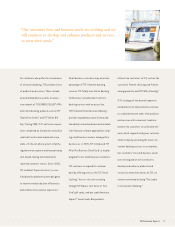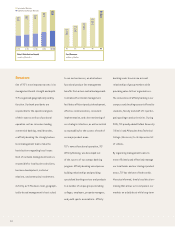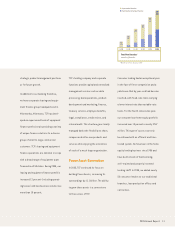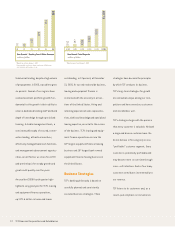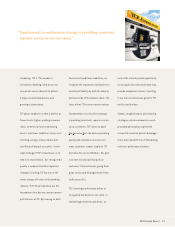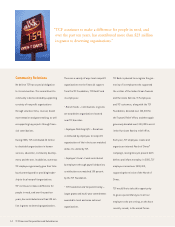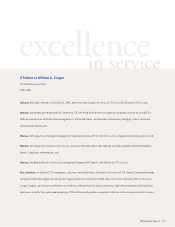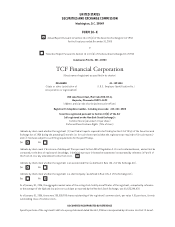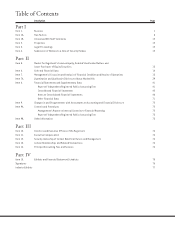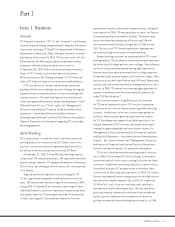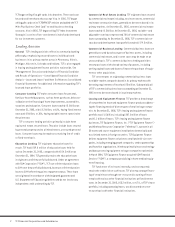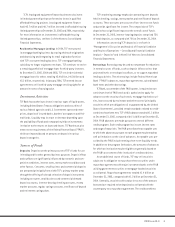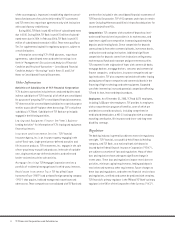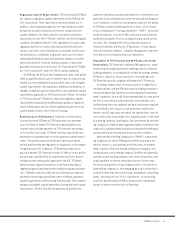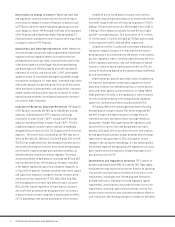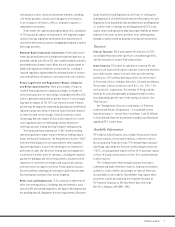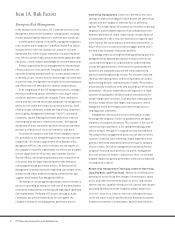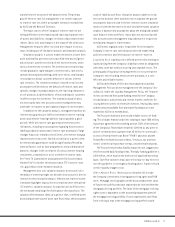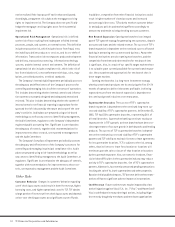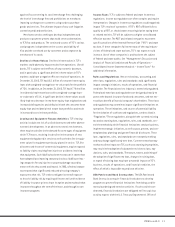TCF Bank 2005 Annual Report Download - page 21
Download and view the complete annual report
Please find page 21 of the 2005 TCF Bank annual report below. You can navigate through the pages in the report by either clicking on the pages listed below, or by using the keyword search tool below to find specific information within the annual report.
12005 Form 10-K
Item 1. Business
General
TCF Financial Corporation (“TCF” or the “Company”) is a Delaware
national financial holding company based in Wayzata, Minnesota.
Its principal subsidiary, TCF Bank®
, is headquartered in Minnesota
and operates in Minnesota, Illinois, Michigan, Wisconsin, Colorado
and Indiana. At December 31, 2005, TCF had total assets of $13.4
billion and was the 48th largest publicly traded bank holding
company in the United States based on total assets as
of September 30, 2005. Unless otherwise indicated, references
herein to “TCF” include its direct and indirect subsidiaries.
References herein to the “Holding Company” or “TCF Financial”
refer to TCF Financial Corporation on an unconsolidated basis.
TCF’s core businesses include retail banking; commercial
banking; small business banking; consumer lending; leasing and
equipment finance; and investments, securities brokerage and
insurance services. The retail banking business includes tradi-
tional and supermarket branches, campus banking, Express Teller®
ATMs and Visa U.S.A. Inc. (“Visa”) cards. See “Management’s
Discussion and Analysis of Financial Condition and Results of
Operations – Consolidated Financial Condition Analysis –
Operating Segment Results” and Note 24 of Notes to Consolidated
Financial Statements for information regarding TCF’s reportable
operating segments.
Retail Banking
TCF’s primary focus is on the delivery of retail and commercial
banking products in markets served by TCF Bank. Some of its
products, such as its commercial equipment loans and leases,
are offered in markets outside areas served by TCF Bank.
At December 31, 2005, TCF had 453 retail banking branches,
comprised of 190 traditional branches, 254 supermarket branches
and nine campus branches. TCF operated 105 branches in Minnesota,
202 in Illinois, 63 in Michigan, 35 in Wisconsin, 42 in Colorado and
six in Indiana.
Targeted new branch expansion is a key strategy for TCF.
TCF has significantly expanded its banking franchise in recent
years. 153 new branches have been opened since January 1, 2000.
During 2005, TCF opened 28 new branches, consisting of 18 new
traditional branches, seven new supermarket branches and three
new campus branches. TCF anticipates opening 24 new branches
in 2006, consisting of 17 new traditional branches, five new
supermarket branches and two new campus branches. During the
fourth quarter of 2005, TCF announced plans to enter the Phoenix,
Arizona metropolitan area market. Initially, TCF plans to open
several consumer loan production offices during 2006 with
construction of retail branches to begin later in 2006 or early
2007. The success of TCF’s branch expansion is dependent on
the continued long-term success of branch banking.
Campus banking represents an important part of TCF’s retail
banking business. TCF has alliances with the University of Minnesota,
the University of Michigan and nine other colleges. These alliances
consist of exclusive marketing and naming rights agreements.
Branches have been opened on many of these college campuses.
TCF provides multi-purpose campus cards for these colleges. These
cards serve as a school identification card, ATM card, library card,
security card, and stored value card for vending machines or simi-
lar uses. In 2005, TCF entered into a naming rights agreement to
sponsor a new University of Minnesota football stadium to be
called “TCF Bank StadiumSM
.”
Non-interest income is a significant source of revenue
for TCF and an important factor in TCF’s results of operations.
A key driver of non-interest income growth is growth in checking
accounts. In addition to low or non-interest bearing deposit
balances, these accounts generate significant fee revenue
for TCF. Providing a wide range of retail banking services is an
integral component of TCF’s business philosophy and a major
strategy for generating additional non-interest income. See
“Management’s Discussion and Analysis of Financial Condition
and Results of Operations – Consolidated Income Statement and
Analysis – Non-Interest Income” and “Management’s Discussion
and Analysis of Financial Condition and Results of Operations —
Forward-Looking Information” for additional information.
TCF strives to develop innovative banking products and serv-
ices. In 2003, TCF introduced TCF Check CashingSM
, a convenient,
economical and full-service check cashing service for non-bank
customers. In addition to providing a valuable customer service,
the product also gives TCF an opportunity to introduce these
customers to its checking account products. In 2004, TCF created
Premier checking and Premier savings accounts with high interest
rates and other valuable features. Also in 2004, TCF created the
TCF Miles PlusSM card, a free non-revolving credit card that is
attached to a Premier checking account. This free card offers
points that may be redeemed for airline travel on virtually any
airline, anytime, anywhere with the option to use points to
purchase merchandise from a leading internet retailer. In 2004,
Part I


